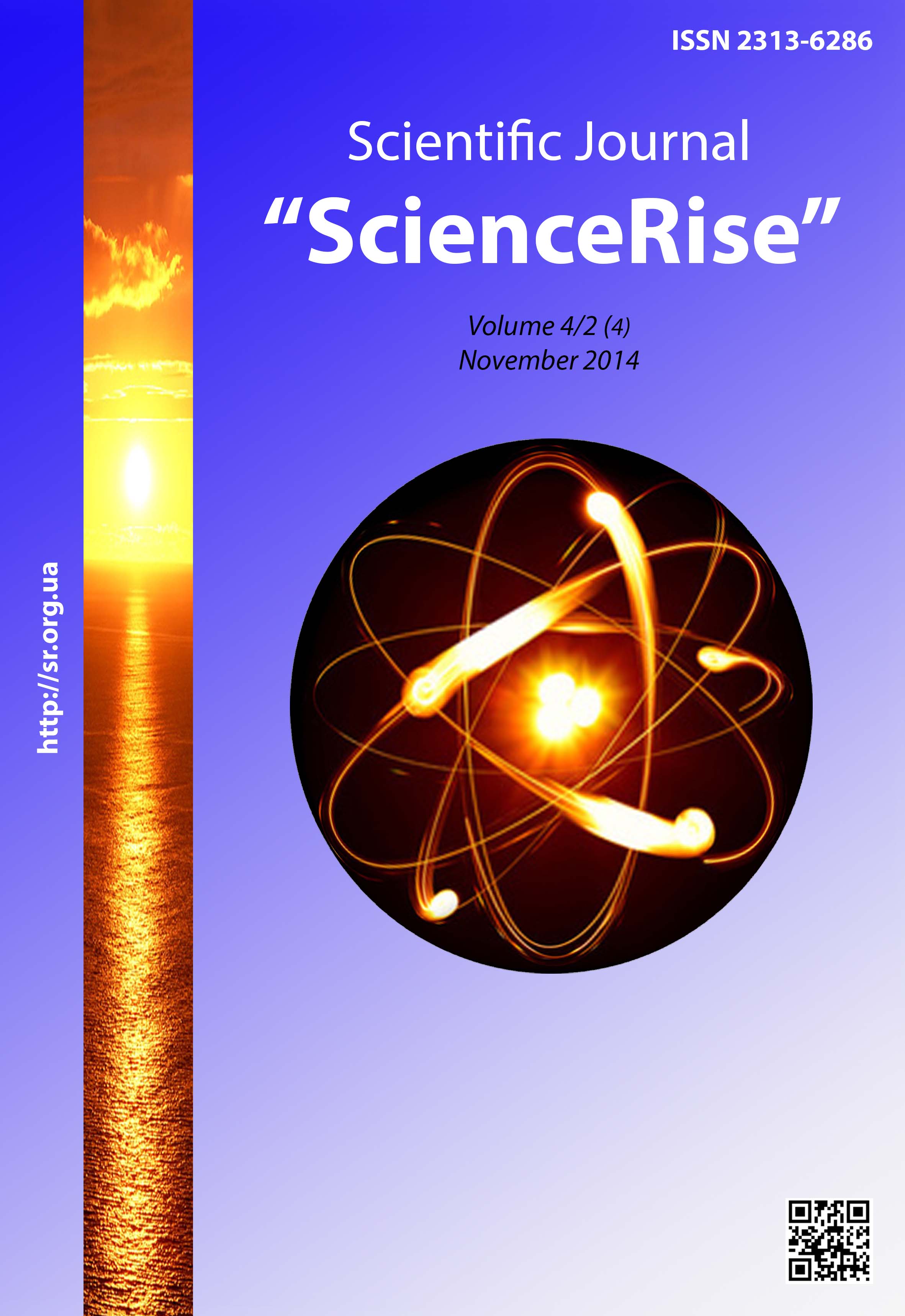Radiolytic transformation of natural toxins in contaminated plant products and water solutions
DOI:
https://doi.org/10.15587/2313-8416.2014.29402Keywords:
ionizing radiation, water solutions of natural toxins, humidity of cerealsAbstract
The kinetic regularities of radiolytic transformation of natural toxins in their oxygen-containing water solutions are studied. Mechanisms of these processes are described in detail. Conditions developing the chain reactions, optimum parameters of detoxification of cereals, fruits and granulated forages are determined. The speed of radiolytic transformations of natural toxins increases with increasing of concentration of oxygen in water solutions and humidity in cereals, fruits and forages (amount of the dissolved oxygen in "free" water of a growing product).
References
Mamedov, Kh. F. (2012). Radio lytic decomposition of a nivalenol in seeds of pumpkin. Scientific Notes of Taurian National University of V. A. Vernadsky: Biology series, Chemistry, 1, 289–294.
Mamedov, Kh. F. (2012). Radiolytic decomposition of ochratoxin in corn grains. Natural and Technical Science, 2 (58), 76–79.
Rusanov, V. A. (2010). Micromycetes and their toxins in grain of corn. Immunopathology, Allergology, Infectologiya, 1, 204.
IAEA-TECDOC-1337. Radiation processing for safe, shelf-stable and ready-to-eat food (2003). Proceedings of a final Research Co-ordination Meeting held in Montreal, Canada, 10.07. 2000. Printed by the IAEA in Austria, 37.
Mamedov, Kh. F. (2012). Radiolytic destruction of aflatoxin in damp mixed fodders. Proceedings of 12th World Congress on Environmental Health held in Vilnius, Lithuania. Printed by International Proceedings Division: MEDIMOND, 23–25.
Mamedov, Kh. F. (2012). Influence of humidity of grain of wheat on photolytic and radiolytic decomposition of aflatoxins. AQROXXI. Agrorussian, 10-12, 20–21.
Mamedov, Kh. F. (2012). Radiolytic decomposition of zearalenone in wheat. Immunopathology, Allergology, 1, 74–77.
Baybakova, Yu. P., Khusainov,I.T. (2010). Sanitary value of a contamination of forages by fungi. Immunopathology, Allergology, Infectologiya, 1, 183.
GOST P 51899-2002. Compound feeds the granulated, General specifications. Vved. 2002-05-06. Moscow: Qosstandart of Russia: Publishing house of standards, 7.
Afanasyev, V. A. (2003). Scientific and practical bases of thermal treatment of grain components and technology of compound feeds. Moscow, 517.
Romero, S. M., Pinto, V. F., Patriarca, A., Vaamonde, G. (2010). Ochratoxin A production by a mixed inoculum of Aspergillus carbonarius at different conditions of water activity and temperature. International Journal of Food Microbiology, 140 (2-3), 277–281. doi: 10.1016/j.ijfoodmicro.2010.04.013
Welke, J. E., Hoeltz, M., Dottori, H. A., Noll, I. B. (2010). Fungi and Patulin in apples and the role of processing on Patulin levels in juices: A study on naturally contaminated apples. Journal of Food Safety, 30 (2), 276–287. doi: 10.1111/j.1745-4565.2009.00205.x
Shah, H. U., Slimpson, T. J., Alam, S., Khattak, K. F. (2010). Mould incidence and Mycotoxin contamination in maize kernels from Swat Valley, North West Frontier Province Of Pakistan. Food and Chemical Toxicology, 4, 1111–1116.
Wammer, K. H., Korte, A. R., Lundeen, R. A. (2013). Direct photochemistry of three fluoroquinolone antibacterials: Norfloxacin, ofloxacin and enrofloxacin. Water Res., 47 (1), 439–448. doi: 10.1016/j.watres.2012.10.025
Xu, Y., Huang, Z. B., He, Q. H. (2010). Development of an immunochromatographic strip test for the rapid detection of deoxynivalenol in wheat and maize. Food chemistry, 119 (2), 834–839. doi: 10.1016/j.foodchem.2009.08.049
Downloads
Published
Issue
Section
License
Copyright (c) 2014 Хагани Фарзулла оглы Мамедов

This work is licensed under a Creative Commons Attribution 4.0 International License.
Our journal abides by the Creative Commons CC BY copyright rights and permissions for open access journals.
Authors, who are published in this journal, agree to the following conditions:
1. The authors reserve the right to authorship of the work and pass the first publication right of this work to the journal under the terms of a Creative Commons CC BY, which allows others to freely distribute the published research with the obligatory reference to the authors of the original work and the first publication of the work in this journal.
2. The authors have the right to conclude separate supplement agreements that relate to non-exclusive work distribution in the form in which it has been published by the journal (for example, to upload the work to the online storage of the journal or publish it as part of a monograph), provided that the reference to the first publication of the work in this journal is included.

